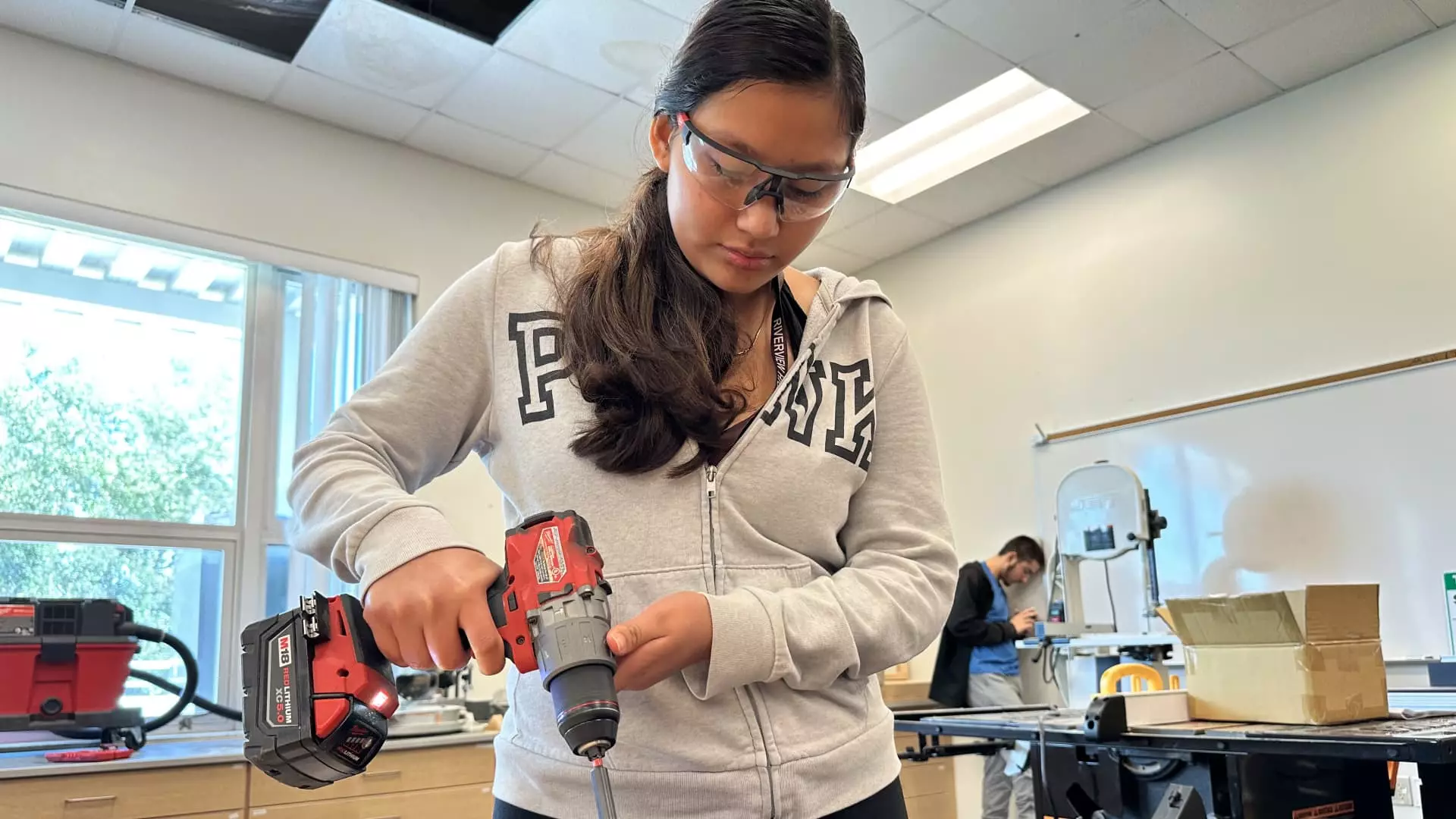In recent times, the traditional pathway to success—a four-year college degree—has come under scrutiny. Increasingly, high school students like Angela Ramirez-Riojas are exploring alternative routes to achieve their career ambitions. For Ramirez-Riojas, who recently enrolled in a vocational construction program at Riverview High School in Florida, the allure of skilled trade work seems to resonate with her familial background and personal aspirations. While college was once thought of as the ultimate goal, the narrative is shifting as many young individuals recognize the value of skill-based training that can lead directly to employment.
The societal expectation that a college degree is necessary for success has been challenged by the evolving landscape of the labor market. Vocational education provides practical skills and training that meet current employer needs, offering a viable option to those who might feel disenfranchised by the steep cost and length of university education. As figures indicate, nearly half of high school students perceive alternative paths—including trade programs and associate degrees—as essential to their future careers.
The establishment of programs like Riverview’s construction academy is a testament to the growing recognition that vocational training can equip students with not only immediate job prospects but also a sustainable career in industries facing significant labor shortages. Riverview High’s program is designed to offer a comprehensive education in various trades, including carpentry, plumbing, and electrical work.
Instructor Jeff Lahdenpera’s observation—that construction is about more than just physical labor—underscores an important shift in how vocational training is perceived. Students are not merely learning how to build; they are acquiring versatile skills that can lead to careers in construction management, logistics, and even marketing within the construction sector. This broader focus not only enhances the program’s appeal but also prepares students for a variety of roles that may exist within the industry.
One significant factor driving the interest in vocational training is the growing labor shortage in the construction industry, a situation that is reflective of a nationwide trend. As experienced workers retire, the demand for skilled tradespeople is projected to skyrocket, necessitating the recruitment of hundreds of thousands of new workers each year. Organizations such as Associated Builders and Contractors have underscored the urgency of attracting talent to sustain industry growth.
The collaboration between educational institutions and local builders, such as the $50,000 donation from Neal Communities to fund Riverview’s construction academy, illustrates the mutual benefit of training a workforce equipped to meet the current and future demands of the construction sector. Investing in resources for vocational programs not only helps alleviate labor shortages but also strengthens local economies by creating a skilled labor force that can contribute significantly.
A crucial consideration for many students and their families is the financial aspect of education and career choices. Recent statistics reveal that new hires in the construction sector earn significantly more than their counterparts in professional services. By the end of the previous year, median pay for new construction hires reached $48,089, highlighting the economic viability of entering a trade. This competitive pay scale is a strong incentive for students to prioritize skilled training over traditional college paths.
According to financial expert Ted Jenkin, the shifting perspectives towards vocational education indicate a significant change in societal attitudes. The “toolbelt generation,” as he describes today’s youth, is increasingly recognizing that valuable career opportunities exist outside the typical four-year college route. As young adults become more discerning about the cost versus benefits of higher education, the gap in earnings between white-collar and well-paying blue-collar jobs narrows, further validating their career choices.
As the educational landscape continues to evolve, vocational programs are carving out a critical niche for students seeking career readiness and financial independence without the burden of student debt. With testimonies from students like Ramirez-Riojas and the endorsements of educational and industry leaders alike, it is clear that skilled trades offer a legitimate path forward.
The rise of vocational education marks a significant social movement towards practical, hands-on training that aligns with labor market needs. For many, the days of viewing college as the sole standard of success are fading, making way for a new generation that understands the worth of skilled trades and the abundant opportunities they provide. By embracing these vocational paths, students are not just preparing for jobs; they are paving the way for fulfilling careers that can sustain them for a lifetime.

Leave a Reply